Workers at 23 CSU campuses are bargaining for higher wages. Will they follow UC and strike?
Another labor uprising is brewing in California higher education – this time within the nation’s largest public university system.
Close to 60,000 workers across the California State University’s 23 campuses are banding together to demand higher wages, better benefits and improved working conditions. Without scheduled step raises, wages have stagnated over the last 15 years. High turnover and under-staffing has led to increased workloads and low morale, the unions say.
The strike that upended classes and final exams at the University of California late last year involved academic workers such as teaching assistants. The CSU movement, however, unites over 30,000 workers in essential support roles along with researchers and about 29,000 faculty members.
Seven unions have formed the “CSU Labor Coalition” to change how the CSU attracts and retains talent. They represent a large swath of workers who keep the system operating: auto mechanics, laboratory technicians, maintenance engineers and financial aid counselors, to name a few.
“We are supporting each other. The CSU is not going to pit us against each other,” said Catherine Hutchinson, president of California State University Employees Union, at a union rally in February. “We’re going to have each other’s backs.”
The unions are each on different timelines for bargaining. But they share those common goals: increasing worker pay and benefits, and improving working conditions to retain staff.
Union leaders base their demands on a compensation study of CSU’s non-faculty staff released last April. The $2 million review, state-funded and jointly commissioned by the CSU and its unions, found that workers’ salaries failed to keep pace with either the private sector or institutions of higher education in California and on the west coast.
The consulting firm Mercer, which conducted the analysis, found that the average non-faculty staff member at CSU makes 12% below market rate. Some jobs, such as those in hospitality and guest services, are as much as 20% below comparable positions elsewhere.
CSU officials have acknowledged the need for improvement.
“The CSU’s mission is in jeopardy if it is unable to recruit and retain qualified employees to serve its students and to fulfill the significant role that the CSU plays within California’s economy,” wrote Steve Relyea, executive vice chancellor and chief financial officer, in a letter to lawmakers and other state officials asking for funding.
Although the CSU agrees with unions that workers are underpaid, the administration contests the labor coalition’s claim that job churn has created adverse working conditions for employees.
“We have no data to support assertions of high turnover,” wrote Michael Uhlenkamp, a university spokesperson, in a statement. Uhlenkamp said Chancellor’s Office data showed that staffing across the 23-campus system grew by 550 people from fall 2021 to fall 2022.
Several unions, including the Teamsters Local 2010, the California State University Employees Union (CSUEU), and the Academic Professionals of California, are pushing hard for a step-based raise system that CSU employees once enjoyed. The CSU Board of Trustees eliminated salary steps for non-faculty staff in 1996, ending decades of seniority-based salary raises.
Steps would guarantee workers raises after serving a certain number of years at the university. Some employees have worked at the CSU for over 15 years and still sit near the bottom of their salary range, unions say. They’ve also argued that CSU workers are some of the only state employees who don’t receive guaranteed step raises in their contracts.
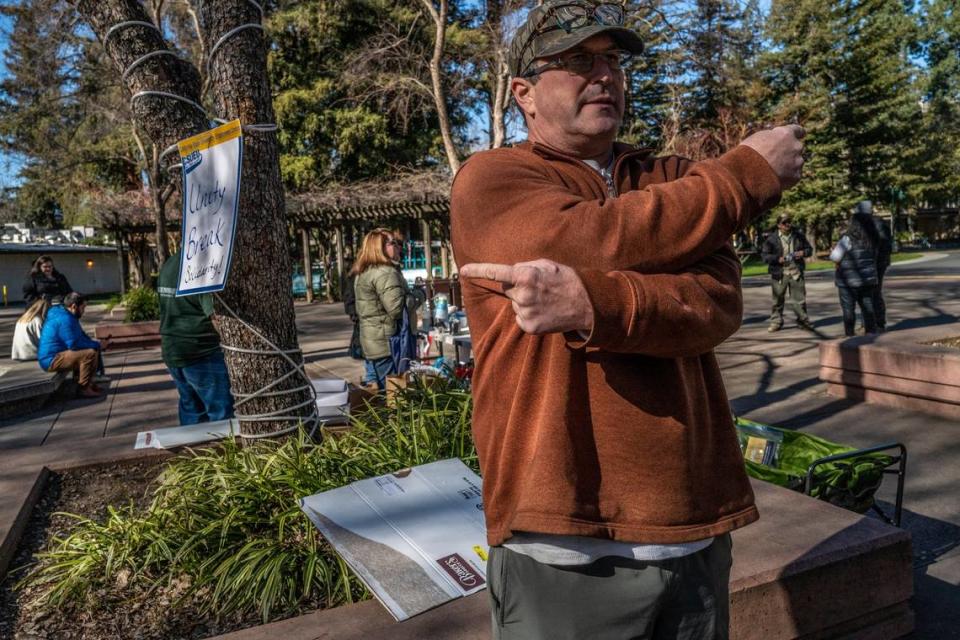
The Teamsters proposed step raises to CSU in January during their first bargaining session. Five weeks later at their next meeting, according to the union, the university countered with an offer that would only grant 2% raises and didn’t include contract language. The Teamsters filed an Unfair Labor Practices charge against CSU last Monday for allegedly failing to bargain in good faith.
“We vehemently dispute the claim of unfair labor practices, and are committed to negotiating with Teamsters Local 2010 to reach an agreement that is in the best interest of both groups,” Uhlenkamp said in a statement Tuesday.
Multiple bills to reinstate steps have been unsuccessful even after passing both legislative chambers. Gov. Jerry Brown vetoed a 2018 measure from Shirley Weber, then a member of the state Assembly, to guarantee CSU workers 5% raises every year. A year later, Gov. Gavin Newsom asked lawmakers to hold Weber’s reintroduction of the bill on the floor, effectively killing it, so that CSU could have a chance to resolve the issue in bargaining.
And last year, Newsom vetoed a watered-down version that would’ve given workers 5% raises after their first, second, third, fifth, seventh, ninth, 12th and 15th years of service.
The two governors’ messages were clear: resolve pay disparity issues in bargaining, and do it with the money that CSU already has available.
“Unless significant additional resources are added to the system, it would require that resources be redirected away from other purposes, likely including student success efforts,” Newsom wrote in his 2022 veto message.“ I expect the CSU Board of Trustees and Interim Chancellor to work collaboratively and creatively with their labor organizations to resolve these issues at the bargaining table.”
The unions say they’re tired of lawmakers and the CSU quarreling over whose responsibility it is to guarantee raises. They’re ready to coordinate labor actions, even suggesting the possibility of a strike.
“They cannot forget that we run these campuses,” said Margarita Berta-Avila, chapter president of the California Faculty Association at Sacramento State. “That our working conditions are the learning conditions of our students.”

Workers want to stay, but pay drives them away
Sam Curtis primarily spends his weeks setting up and tearing down labs in Sacramento State’s biology department.
On a Monday morning in February, he hurried around a classroom preparing supplies students would need for the week’s enzyme lab. He bounced back and forth between the classroom and the prep space, where a starchy solution brewed in a conical flask on a hot plate.
He had spent nearly four hours the previous Friday arranging the students’ work stations. At each of the 10 tables sat a mint green container filled with bottles of chemicals and other supplies, alongside racks of test tubes and pipettes. Each tube and dropper featured labels such as “milk,” “starch,” or “pasta water” in Curtis’ neat penmanship. He made three sets of them so he would have backups just in case, which meant he had to write almost 2,000 labels by hand.

Curtis, 35, a rank-and-file member of CSUEU, has been an instructional support technician in biological sciences for about five years. A Sacramento State graduate, he worked for the Sacramento Zoo before switching into his current job, which brought him closer to campus while he finished his master’s degree in ecology.
On top of preparing labs for undergraduate non-biology majors, Curtis runs the campus vivarium — a miniature zoo-like collection of animals and insects that students can explore and study. He also oversees the vertebrate museum since the previous caretaker suddenly left the university.
Curtis had hoped for a long and successful career within the CSU after he graduates in May. But given the stagnant wages and little room for career advancement, he no longer feels as confident about that future. He makes about $52,000 a year in base pay, and his paychecks haven’t grown much since he took the job.
“It just doesn’t feel like a place where anyone can stay and work for the long term,” Curtis said. “It doesn’t really feel like I can continue to afford to survive off of what I make here.
“If nothing changes, how am I supposed to be able to afford to stay?”

Just before the COVID-19 pandemic, he bought a fixer-upper in south Sacramento with his fiance, whom he met during his undergraduate years. It was the only house they could afford at the time, and the mortgage alone eats up nearly half the couple’s joint income each month.
In January, they shelled out $15,600 for a new roof – most of their joint savings.
“There’s almost no extra money for incidentals,” Curtis said. “That’s a pretty scary place to be.”
Interacting with students and working with animals is what keeps him in the job for now. If the union isn’t able to win significant raises in the next contract, he’ll probably consider other options.
“I’ve had students who volunteered in the vivarium,” Curtis said, “and they went off to make, immediately right out of school, a lot more money than I’m making after all these years of working.”
On the same Monday morning, in the basement of a different campus building, Tony Valdez tinkered with a broken pump critical to the building’s steam heating system. He is one of only a handful of building service engineers on campus who repair and maintain all parts of the Central Plant – the heart of the campus’s steam-powered heating and cooling system.
Valdez’s team suffers heavily from understaffing. He believes that is due in part to the Mercer study’s findings that CSU’s pay isn’t competitive with the private sector, or even comparable jobs within local and municipal government. Because of that, Valdez said, attracting qualified candidates is difficult. The result? As people retire from his team, instead of hiring new folks, management just shrinks the number of “zones” on campus and makes each remaining person responsible for more buildings.
Having fewer people means workers are stretched thin and non-emergency, preventive maintenance tasks fall to the bottom of the priority list. As a result, the team ends up racing around triaging broken equipment.
“We’re in the business of putting fires out now,” Valdez said, “and waiting for things to break.”
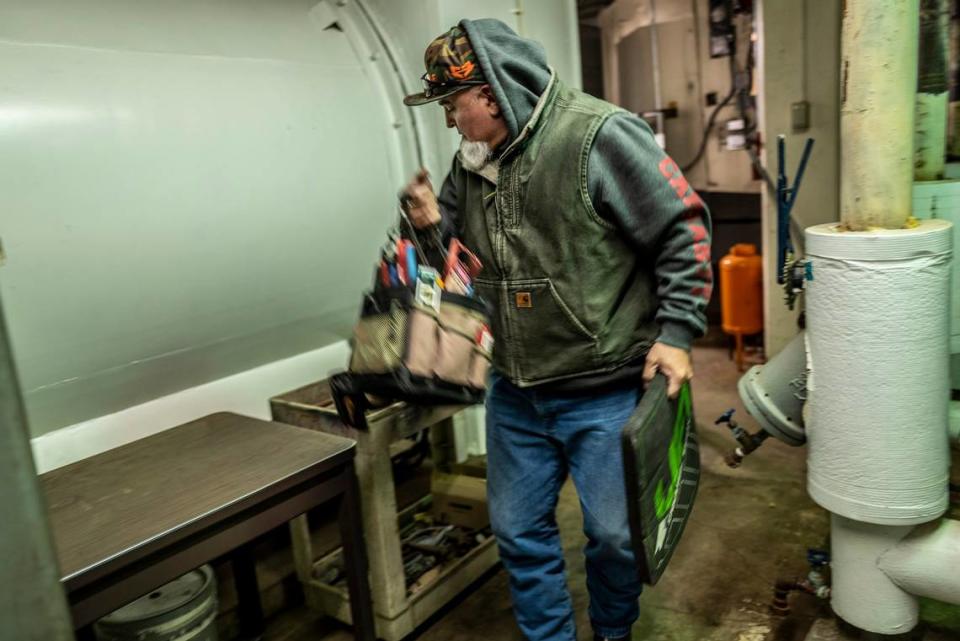
When he started at Sacramento State 13 years ago, the department’s list of maintenance tasks and emergency calls could fit on one page. Today, the list is at least three times as long.
“We’re beyond busted at the seams,” he said. “We’re at a critical stage.”
Valdez, 45, also works odd jobs in the evenings and on weekends. He makes close to $73,000 a year, but he and his wife still struggle, and the after-hours work helps bridge the gap. The couple raised their four children in an Auburn house that’s been in the family for more than 100 years. They felt guilty about inheriting the home, so they decided instead to buy the property from family members. Their monthly mortgage payment costs about $2,800. And with natural gas prices soaring, the couple has paid hundreds more per month filling the propane tank that heats their water and home.
If the Teamsters can win raises in bargaining, Valdez said, that extra boost would help ease his family’s money concerns. They rarely go out to eat anymore, and raising livestock helps keep grocery costs down. Even driving through Taco Bell is now a luxury.
“I’ve had major anxiety issues coming from where we are financially,” Valdez said, “trying to figure out a way to pay the bills and not lose the house that belongs to our families.”
Valdez knows he could probably make more money elsewhere, but the retirement benefits he would receive as a state worker make leaving CSU a tough decision. He gratefully took the job in the depths of the 2008 recession after leaving the Air Force, almost five years before the state reformed CalPERS benefits calculations.
“This is only the third job I’ve had in my entire life,” Valdez said. “It was a blessing to get this job.”
Valdez wants more than anything to retire in Auburn. He and his wife’s families have lived there for generations — their ancestors have roads named after them — and their final resting places are in the family cemeteries. Their four children, now adults, live in Auburn, too. Two are moving back in with their parents to save money.
If Valdez leaves CSU now, he risks throwing away that retirement dream.
“Even though we’re in dire circumstances,” he said, “it’s scary to jump ship.”
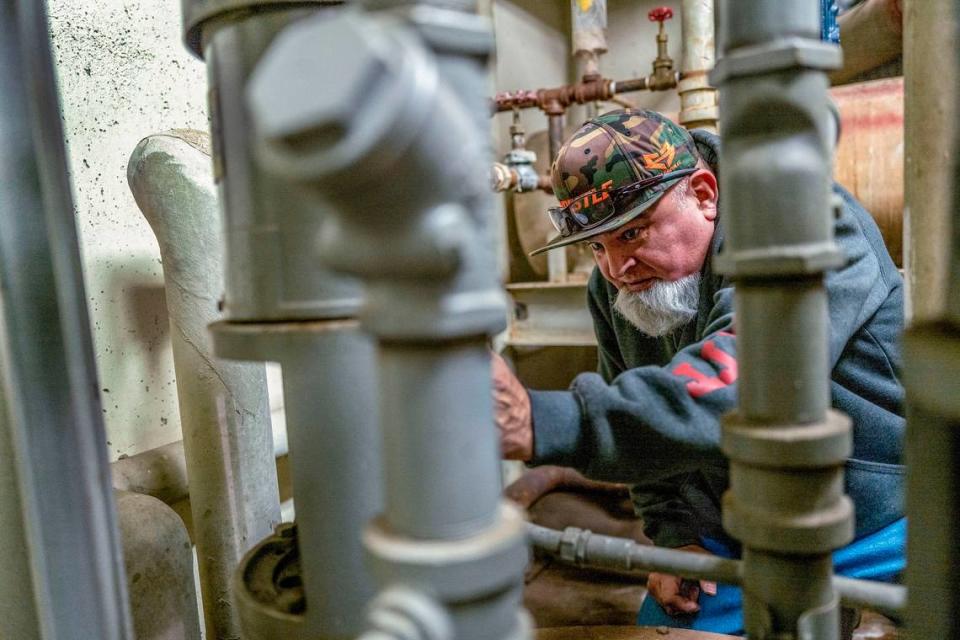
CSU and state officials play ‘hot potato’ with worker compensation
This bargaining year is critical, workers say. The legislature has already demonstrated its support by passing bills to reintroduce pay steps. But it appears to them that the governor and the CSU are playing a game of “hot potato,” with neither side willing to take responsibility for raising wages. Workers say this traps them in the middle without raises or guarantees of raises in the future.
“We’ve waited long enough this time,” said Matt Mason, an auto mechanic for Sacramento State and campus steward for the Teamsters, “and we want to restore fairness here at the CSU.”
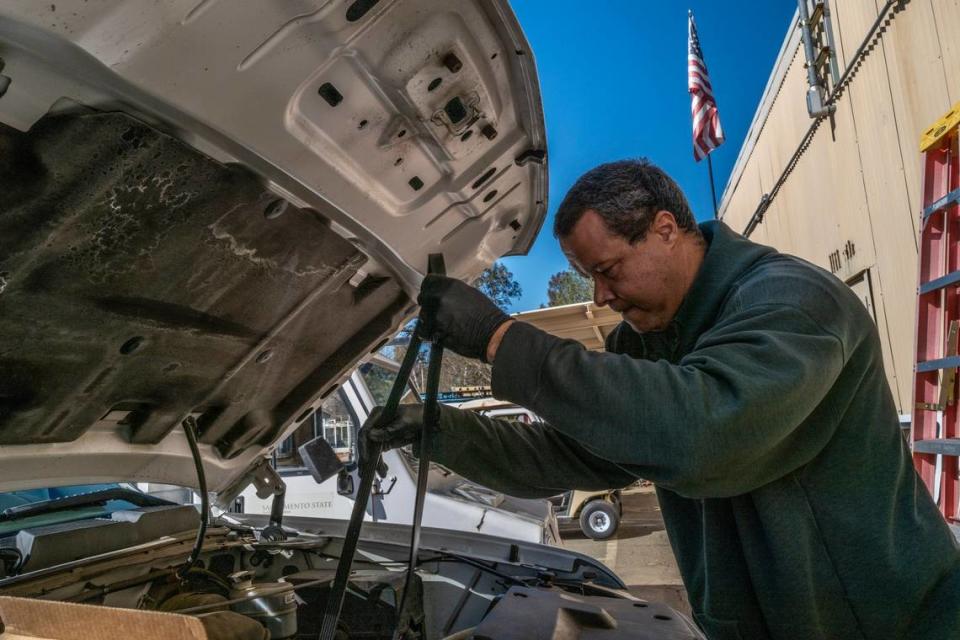
CSU administrators say they’ve recently presented CSUEU in bargaining with a proposed framework for step-based raises but declined to say what the incremental pay increases would be. Whether the university will offer the same to the other unions negotiating step raises is unclear.
The union isn’t happy with the university’s proposal.
“The CSU proposal does little to nothing to establish longevity or stability for the workforce that serves students and faculty,” wrote CSUEU’s president Hutchinson in a statement. “One key recommendation from the Mercer salary study, commissioned by the CSU, is to create a steps system that gets employees to a competitive pay level in five years. Under the CSU proposal, workers will be chasing this elusive goal for the rest of their tenure at the University.“
If bargaining doesn’t yield victories on wages, unions have suggested the possibility of striking.
A coordinated work stoppage won’t happen any time soon, though. The Teamsters and CSUEU only started bargaining within the last month or two, and the other unions won’t enter bargaining until summer or fall.
Still, the unions have laid the foundation for a strike larger than even the historic UC movement.
“I hope we don’t have to strike,” said Jason Rabinowitz, secretary-treasurer for the Teamsters. “But that’ll be up to the state.”
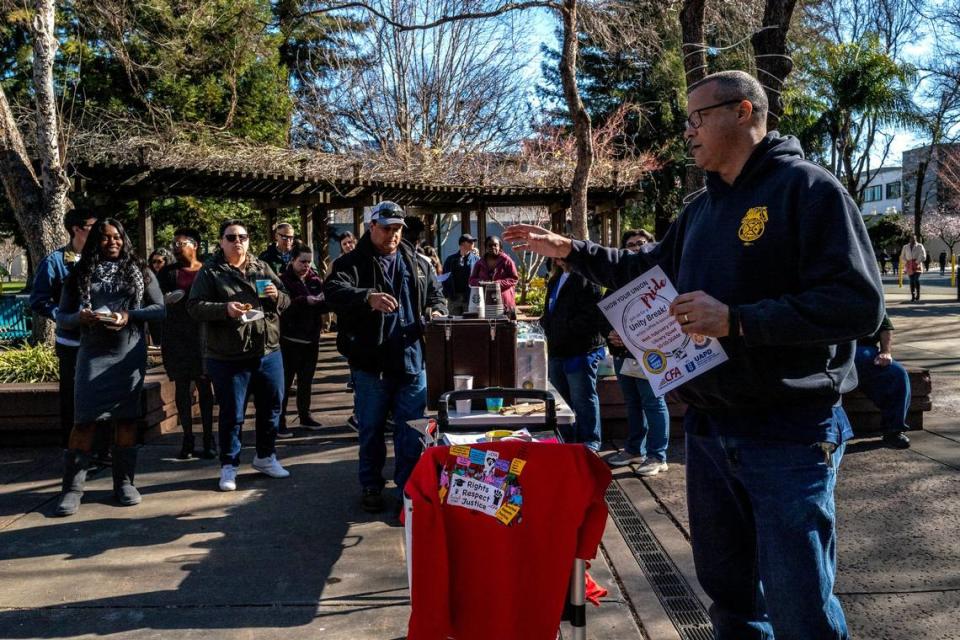

 Yahoo Movies
Yahoo Movies 